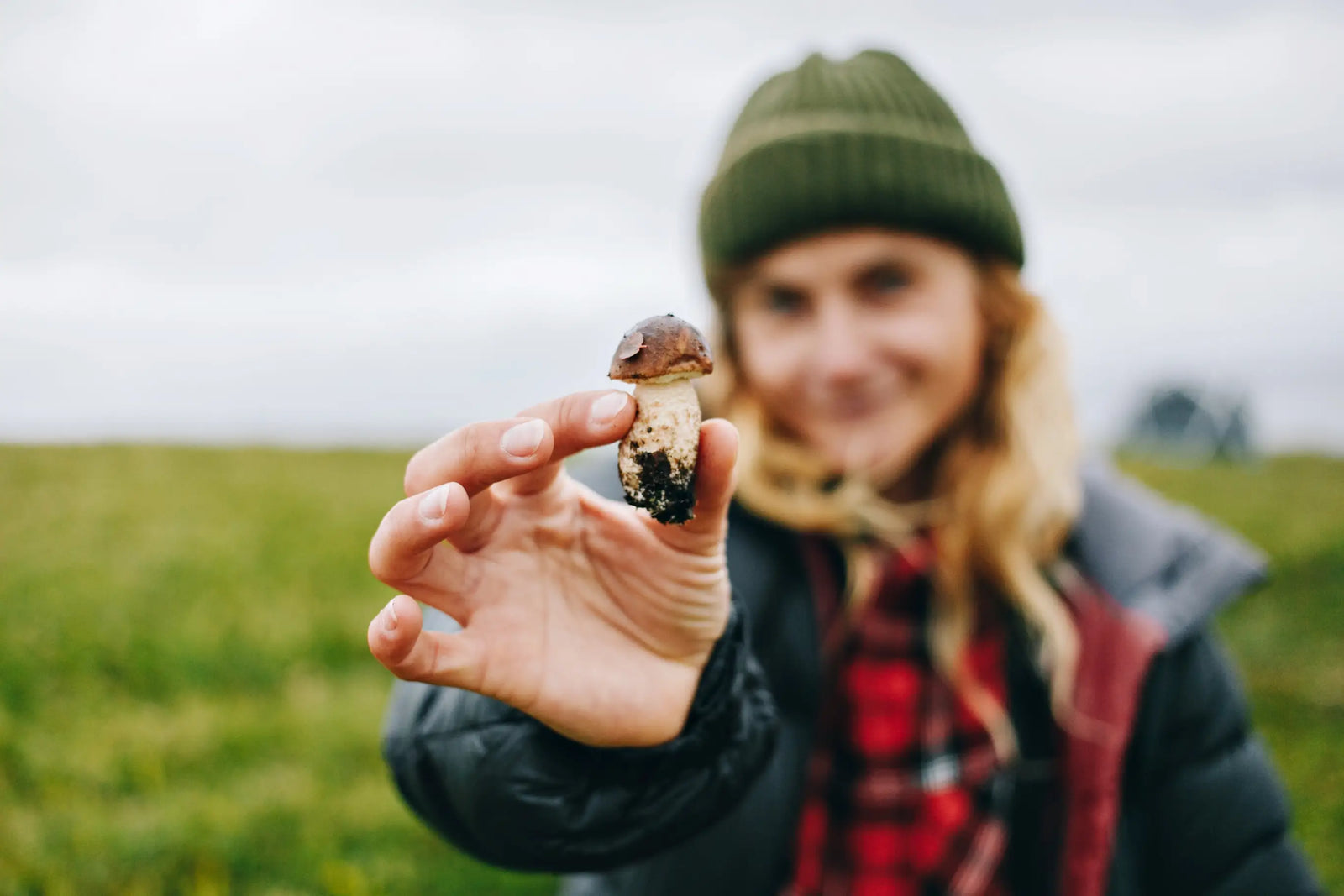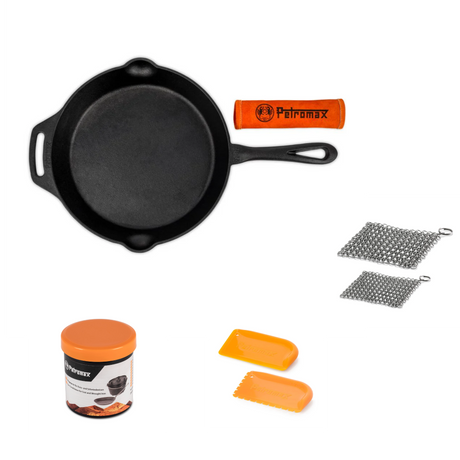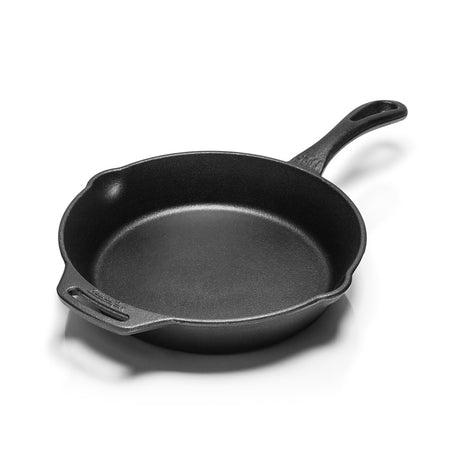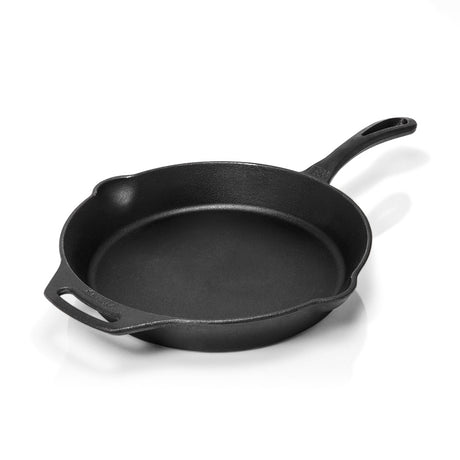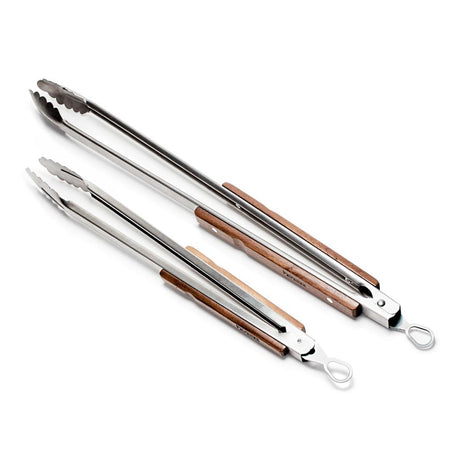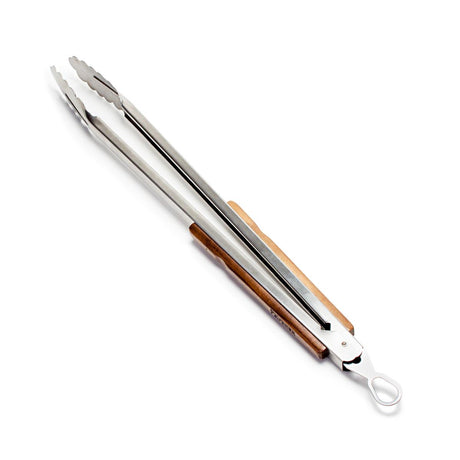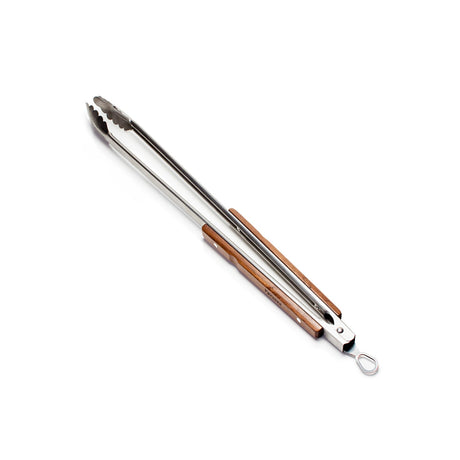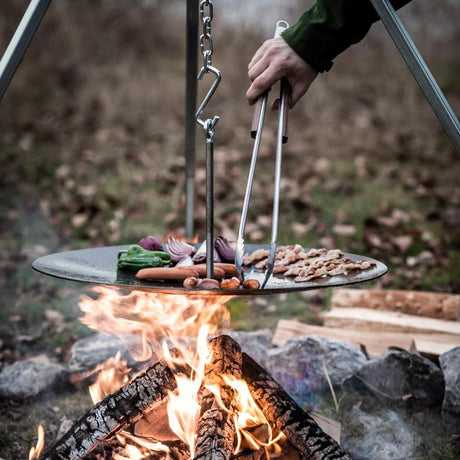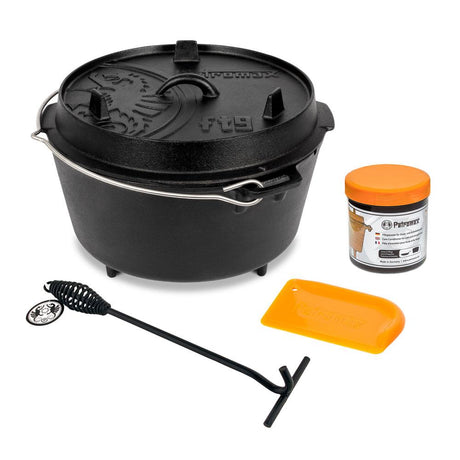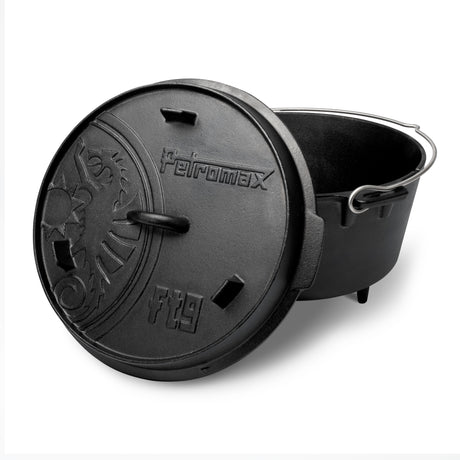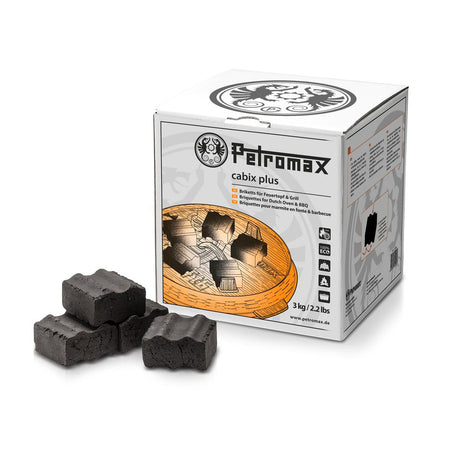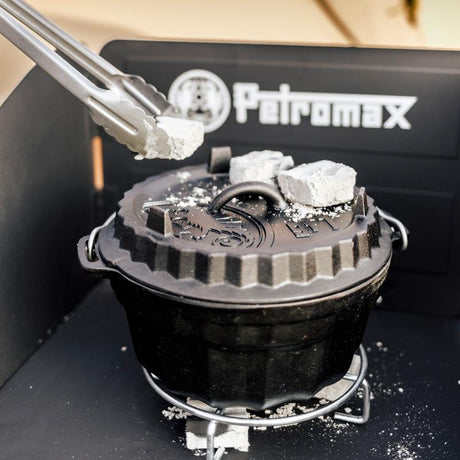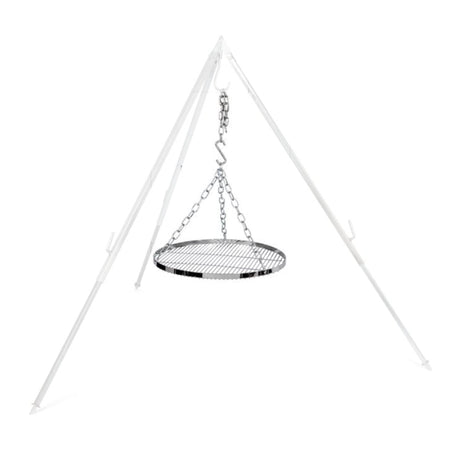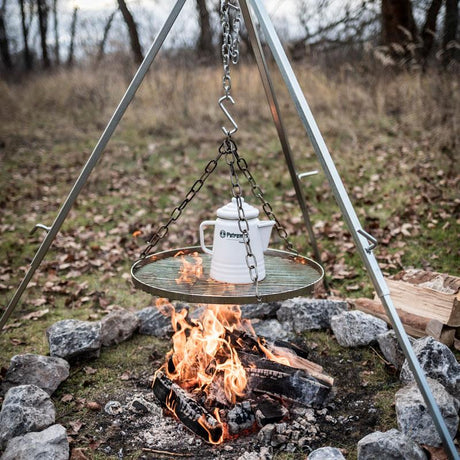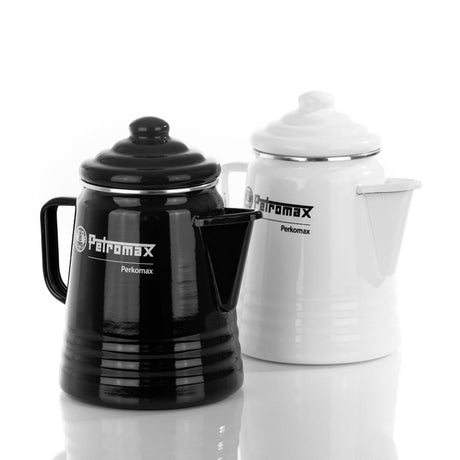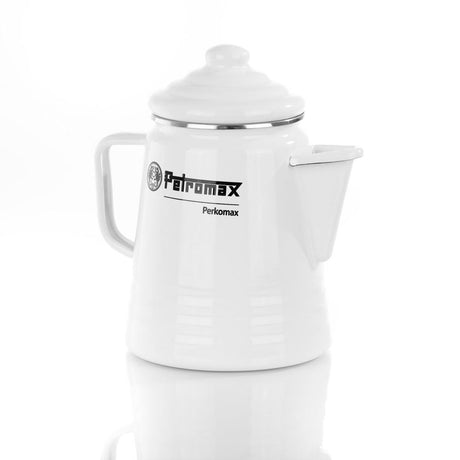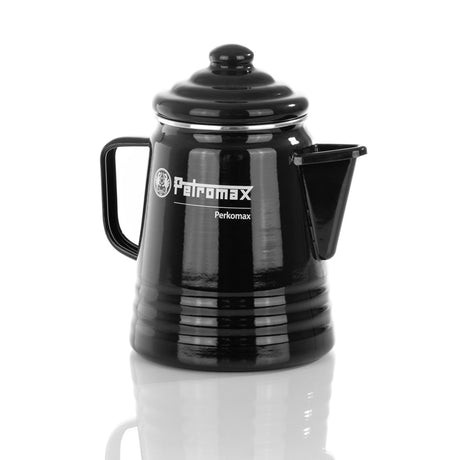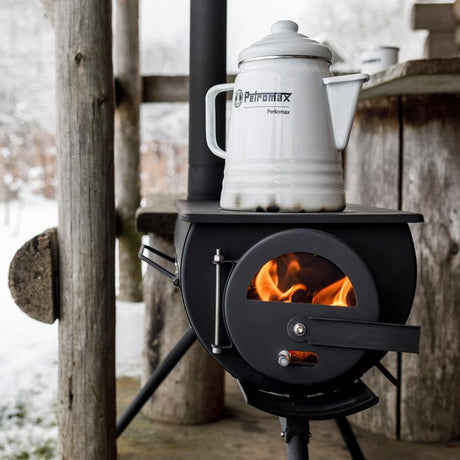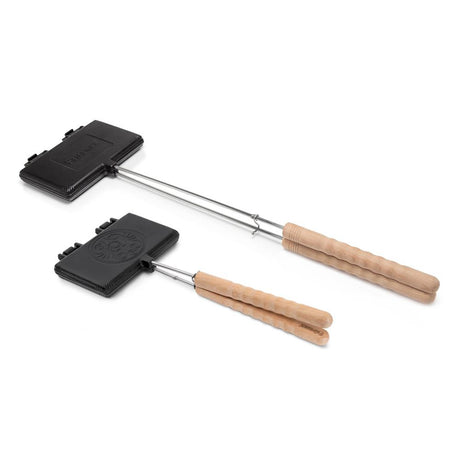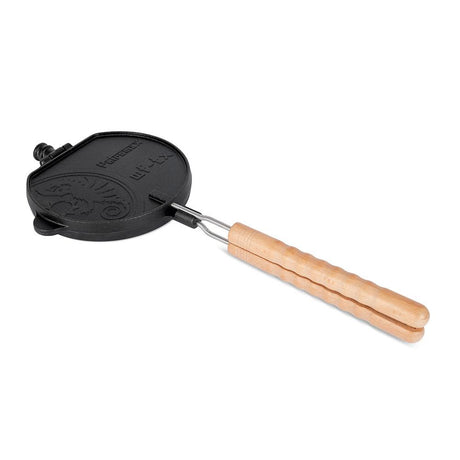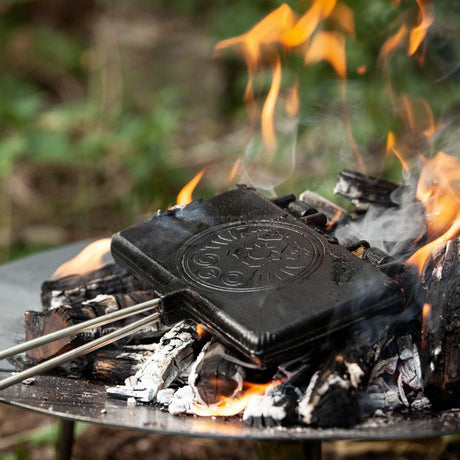There are few things better than strolling through the forest and picking fresh mushrooms. Whether crispy fried in a pan, as a side dish with meat or simply on their own: mushrooms are not only delicious, they are also great fun to find. But beginners in particular often ask themselves: Which mushrooms are actually edible, how do I recognize them and what should I look out for? That's exactly what this is all about.
To help you get through the mushroom season safely, we take a look at the most popular edible species, explain their typical characteristics and show you how to avoid confusion with poisonous lookalikes. At the end, you'll also find tips on how to collect and prepare them correctly.
Table of contents
What edible mushrooms are there and how can you recognize them?
How can you tell the difference between porcini mushrooms, chanterelles and the like?
How can you avoid confusing them with poisonous lookalikes?
How do you collect and prepare mushrooms correctly?
What edible mushrooms are there and how can you recognize them?
Mushrooms are fascinating creatures: They consist of a fine network underground - the mycelium - and form the fruiting body on the surface, which we know as a "mushroom". Typical features are the cap and stem, which look very different depending on the type of mushroom.
Many edible mushrooms can be found in deciduous and coniferous forests. This is where the most popular edible species such as porcini mushrooms, chanterelles and button mushrooms grow. Accurate identification is the be-all and end-all: you should only take the mushroom with you if you are sure that it is an edible species.
👉 When to pick mushrooms - here you can find out at which time of year you have the best chances.
Tip: Beginners should concentrate on a few species at first. This will teach you how to recognize many edible mushrooms based on clear characteristics.
An overview of the most popular edible mushrooms
To help you get started, here is an overview of the best-known edible species in Germany.

Porcini mushroom (Boletus edulis)
- Characteristics: Massive, light-colored stem, brown cap, small tubes on the underside instead of lamellae.
- Habitat: Mainly in mixed and coniferous forests, often under spruce trees.
- Recognize: Almost unmistakable due to the firm stalk and the spongy tubular base.
- Special feature: The king of mushrooms - popular because of its fine, nutty aroma.

Chanterelle (Cantharellus cibarius)
- Characteristics: Golden yellow, funnel-shaped cap that merges directly into the stem.
- Habitat: Mainly in deciduous forests, often in groups.
- Recognize: Bright yellow color and a slightly peppery smell.
- Special feature: Its spicy taste makes it a classic in the kitchen.

Button mushroom (Agaricus)
- Characteristics: White or brown cap, with pink to brown lamellae underneath.
- Habitat: Open meadows, forest edges or gardens.
- Recognize: Characteristic odor, especially when cut.
- Special feature: One of the best-known edible mushrooms - both as a wild find and from the supermarket.

Chestnut mushroom (Imleria badia)
- Characteristics: Dark brown cap, yellowish tubes, firm stem.
- Habitat: In coniferous forests, especially under pines and spruces.
- Recognize: The cap turns slightly blue when pressed - a clear distinguishing feature.
- Special feature: Aromatic and versatile, perfect for mushroom pans.

Parasol (Macrolepiota procera)
- Characteristics: Huge, umbrella-shaped cap with a scaly surface, long thin stalk.
- Habitat: Forest edges, clearings, meadows.
- Recognize: Diameter of the cap can be up to 40 cm.
- Special feature: Excellent breaded and fried - like a mushroom cutlet.

Curly hen (Sparassis crispa)
- Characteristics: Coral-like twisted shape, reminiscent of a bath sponge.
- Habitat: At the foot of pine trees.
- Recognize: Hard to confuse with other mushrooms due to its unusual shape.
- Special feature: Very aromatic, can be dried well and used later.
How can you tell the difference between porcini mushrooms, chanterelles and the like?
When you have your first finds in your hand, you're probably asking yourself: "Okay, which edible mushroom is this actually?" - this is where it gets exciting. In Germany, there are a few real classics that almost every mushroom picker knows. The porcini mushroom, the chanterelle and the button mushroom are at the top of the list. But exotic species such as the curly hen or the impressive parasol are also among the most popular.
The good thing is: with a little practice, you can tell these mushrooms apart quite quickly. Each has its own typical characteristics - from the nutty taste of the porcini mushroom to the bright color of the chanterelle and the "schnitzel look" of the parasol. Below we take a closer look at how you can recognize these mushrooms and where you can find them.
| Mushroom | Typical characteristics | Taste / special feature | Location |
|---|---|---|---|
| Boletus mushroom | Firm stem, brown cap, small tubes underneath instead of slats | Mild, slightly nutty taste | Especially under spruce trees and in mixed forests |
| Chanterelle | Bright yellow cap, runs funnel-shaped to the stem | Strongand spicy | Especially in deciduous forests |
| Button mushroom / meadow mushroom | White to brown cap, pink to brown plates | Mild, versatile | Meadows, forest edges |
| Curly hen | Looks like a sponge, loosely coiled shape | Aromatic | At the foot of pine trees |
| Parasol | Huge hat, reminiscent of a schnitzel when breaded | Mild, delicious fried | Clearings, forest edges |
Distinguishing them is easy with a little practice: the porcini mushroom, for example, has tubes rather than slats, while the parasol stands out due to its size. You can immediately recognize chanterelles by their bright color and spicy aroma.
How do you avoid the risk of confusion with poisonous lookalikes?
As beautiful as the world of mushrooms is, there is a downside: the risk of confusion. Some edible mushrooms look confusingly similar to their poisonous doppelgangers. And that can be really dangerous. Even a small bite into the wrong mushroom can cause health problems - in the worst case, it can even be life-threatening.
The button mushroom in particular is a prime example of a deadly poisonous doppelganger. They look harmless, but are often mistaken for edible species by collectors. Therefore, if you want to pick mushrooms, you should not only familiarize yourself with the tastiest species, but also with their dangerous "twins". This is the only way to avoid risks and stay safe.
Other inedible mushrooms also pose risks. The following therefore applies:
- Are you unsure? Then leave the mushroom alone.
- If in doubt, seek advice from a mushroom advice center.
- Familiarize yourself with "Mushrooms and their poisonous doppelgangers" to minimize the risk of confusion.
👉 So always be careful with mushrooms - this is the only way to avoid risks.
How do you collect and prepare mushrooms correctly?
Have you found your first mushrooms? Congratulations! 🎉 Now comes the next step: picking mushrooms is not only a great pastime, but also a small art. There are a few things to consider when picking mushrooms - from the right technique for picking them to choosing the right species and transporting them in a basket.
But that's not all. After collecting, it's time to prepare. And this is also where many beginners make mistakes. Did you know, for example, that most mushrooms should not be eaten raw? Only when they are cooked do they become really digestible and develop their full, aromatic and spicy flavor.
Once you have found a mushroom, carefully pull it out of the ground or cut it off just above the ground. Be careful not to damage the mycelium so that new mushrooms can grow back in its place.
A few golden rules for mushroom pickers:
- Onlycollect mushrooms in small quantities - this leaves enough for others.
- They taste best when freshly picked.
- Beginners should definitely have their first finds checked by experts.
When preparing mushrooms, you should not eat them raw, as many species are then inedible or difficult to digest. They only develop their aromatic and spicy flavor when cooked.
Whether fried in a pan or cooked in a stew - fresh from the forest, they are a real highlight.
Summary: the most important facts at a glance
- You can recognize edible mushrooms by characteristics such as their cap, stem and location.
- Many popular edible mushrooms have poisonous doppelgangers - risk of confusion!
- Picking mushrooms correctly means carefully removing them from the ground and identifying them safely.
- Mushrooms should always be boiled or fried before eating.
- Beginners should concentrate on a few, easily recognizable species.
